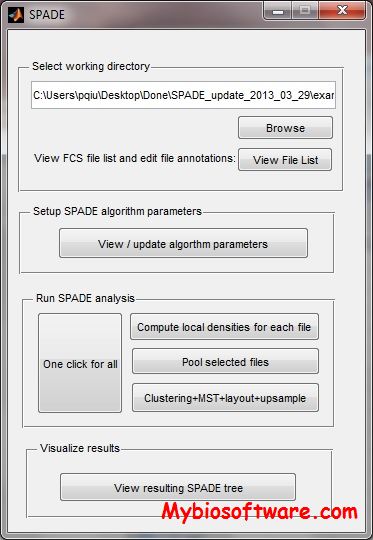SPADE 3.0 / CytoSPADE 2.2
:: DESCRIPTION
SPADE is a visualization and analysis tool for high-dimensional flow cytometry data. SPADE is implemented as an R package and can be installed via R’s packaging facilities.
CytoSPADE is an implementation of the Spanning-tree Progression of Density-normalized Events (SPADE) algorithm for visualizing high-dimensional flow cytometry data.
::DEVELOPER
Garry P. Nolan Laboratory / Peng Qiu
:: SCREENSHOTS
:: REQUIREMENTS
- Linux/ Windows/ MacOsX
- R package / Java , Cytoscape
:: DOWNLOAD
:: MORE INFORMATION
Citation
Extracting a cellular hierarchy from high-dimensional cytometry data with SPADE
Peng Qiu, Erin F Simonds, Sean C Bendall, Kenneth D Gibbs Jr, Robert V Bruggner, Michael D Linderman, Karen Sachs, Garry P Nolan & Sylvia K Plevritis
Nature Biotechnology 29, 886–891 (2011)
Linderman MD, Bjornson Z, Simonds EF, Qiu P, Bruggner R, Sheode K, Meng TH, Plevritis SK, Nolan GP.
CytoSPADE: High-Performance Analysis and Visualization of High-Dimensional Cytometry Data.
Bioinformatics. 2012 Sep 15;28(18):2400-1. doi: 10.1093/bioinformatics/bts425
